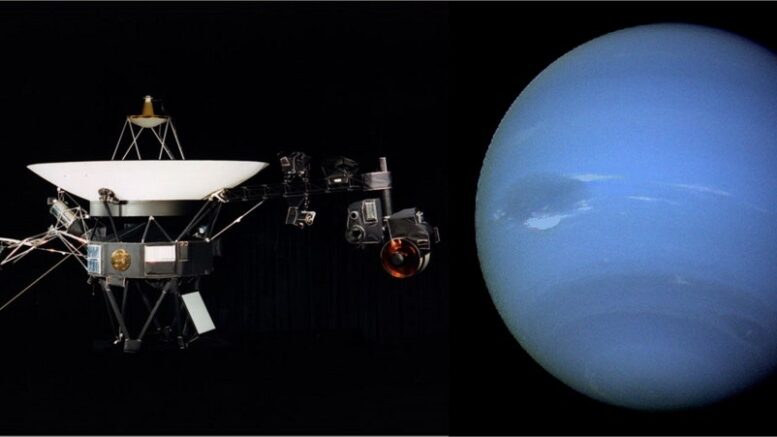As it takes between 5 to 10 years for a spacecraft to either flyby or enter orbit around these planets, Uranus and Neptune have not been explored by many spacecraft. We have done a few articles on the reasons to send probes to these celestial bodies, but today we will discuss the probes that have visited them and a little bit about what was discovered.
Uranus has only seen 1 spacecraft visit the planet, which is Voyager 2. Just like Uranus, Neptune has been visited by only 1 spacecraft, Voyager 2 when it flew by the planet on August 25th 1989.
Uranus
When visited by Voyager 2, it was discovered that the planet had a magnetic field, the intense radiation in the planet, a high layer of haze that radiated large amounts of UV light, and the illuminated and dark poles, and most of the planet, show nearly the same temperature at the cloud tops. Interestingly Voyager 2 discovered 10 new moons during its last pass.
There have been a few proposed missions to study Uranus, but none of them have yet to move forward in terms of funding to planning and potential launch. For more information about potential future missions to explore Uranus, see this article on the subject.
Missed Opportunities
Voyager 1 was unable to visit Uranus because investigation of Saturn’s moon Titan was considered a priority. This trajectory took Voyager 1 out of the plane of the ecliptic, ending its planetary science mission.[1]
The possibility of sending the Cassini spacecraft from Saturn to Uranus was evaluated during a mission extension planning phase in 2009, but was ultimately rejected in favor of destroying it in the Saturnian atmosphere.[2]
Neptune
When Voyager 2 visited Neptune in 1989, it discovered previously unknown Neptunian rings, and confirmed six new moons: Despina, Galatea, Larissa, Proteus, Naiad and Thalassa.[3] Of these, the irregularly shaped Proteus is notable for being as large as a body of its density can be without being pulled into a spherical shape by its own gravity.[4] While in the neighborhood of Neptune, Voyager 2 discovered the “Great Dark Spot”, which has since disappeared, according to observations by the Hubble Space Telescope. The Great Dark Spot was later hypothesized to be a region of clear gas, forming a window in the planet’s high-altitude methane cloud deck. Voyager 2 observed weather phenomena. This occultation had been attributed to ring arcs, but when Voyager 2 observed Neptune in 1989, Larissa was found to have caused it.
For more information about potential future exploration options of Neptune bing considered, check out this article.
Sources And Further Reading
Check out the Planetary Bodies Category for previous and upcoming articles on the solar system planets.
[1] = David W. Swift (1 January 1997). Voyager Tales: Personal Views of the Grand Tour. AIAA. p. 69. ISBN 978-1-56347-252-7.
[2] = Spilker, Linda (1 April 2008). “Cassini Extended Missions”(PDF). Lunar and Planetary Institute. Archived (PDF) from the original on 23 April 2008.
[3] = Stone, E.C.; Miner, E.D. (1989). “The Voyager 2 Encounter with the Neptunian System”. Science. 246 (4936): 1417–21. Bibcode:1989Sci…246.1417S. doi:10.1126/science.246.4936.1417. PMID 17755996.
[4] = Brown, Michael E. “The Dwarf Planets”. California Institute of Technology, Department of Geological Sciences. Archived from the original on 19 July 2011.

Be the first to comment on "Scientific Missions: Uranus And Neptune"